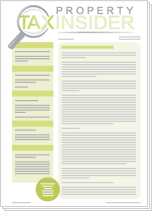Before you go, sign up to our free tax saving email course. Get 7 top property tax saving strategies in your email inbox that will help you save thousands in tax. Unsubscribe any time.
 Mark McLaughlin points out that transactions should be structured correctly to avoid the risk of adverse tax consequences. Mark McLaughlin points out that transactions should be structured correctly to avoid the risk of adverse tax consequences.Capital gains tax (CGT) relief is generally available on the disposal of property in respect of improvements, etc., for ‘the amount of any expenditure wholly and exclusively incurred on the asset by him or on his behalf for the purpose of enhancing the value of the assets, being expenditure reflected in the state or nature of the asset at the time of the disposal’ (TCGA 1992, s 38(1)(b)). Note the requirement that expenditure is incurred on the asset ‘by him or on his behalf’ (‘him’ being the person to whom the gain accrues on the disposal of the property). Does this mean that (for example) enhancement expenditure incurred by an individual property owner’s company could be treated as incurred by the property owner for the purposes of claiming relief for enhancement expenditure? This point was recently considered in Sidebottom v Revenue and Customs [2018] UKFTT 549 (TC). Costs incurred by the company In that case, the taxpayers (husband and wife at the time) owned a disused factory and connected land (SM) acquired for £170,000 in 2002. The taxpayers intended redeveloping SM, or at least obtaining planning permission and selling it at a profit. They subsequently established a new company (MPL) with equal shareholdings. They entered into a development agreement (the taxpayers were MPL’s sole customer), whereby MPL would develop SM. Expenditure in relation to SM was incurred by MPL, using loans obtained by one of the taxpayers (RDS). He advanced lump sums to MPL, and the company used those funds to pay the cost of contractors, etc. in respect of SM. The advances made by RDS were treated as director’s loans in MPL’s accounts, none of which were ever repaid by MPL. Problems following a change of the taxpayers’ bankers in 2008 resulted in MPL being struck off in February 2010. In March 2011, the bank appointed receivers and sold SM for approximately £400,000. HM Revenue and Customs assessed the taxpayers on the basis that the expenditure in respect of obtaining planning permission and improvement work was not incurred by the taxpayers and so did not qualify as enhancement expenditure for CGT purposes. The taxpayers had claimed enhancement expenditure of £283,227, being an amount equal to the director’s loan account (DLA). They argued that in economic terms they had incurred the expenditure and should, therefore, obtain tax relief for it. However, the First-tier Tribunal disagreed and dismissed their appeal. A different outcome? The difficulty for the taxpayers in Sidebottom was that MPL never charged them for work on the property (it had been agreed that the company’s development fee would be payable once planning permission was obtained, but no invoice was raised). Accordingly, the taxpayers did not incur the cost of MPL’s services under the development agreement. However, a loss occurred in the above case on the DLA, which became an irrecoverable loan upon the winding up of MPL. Tax relief for ‘loans to traders’ is potentially available in such circumstances, if certain conditions are satisfied (see TCGA 1992, s 253). This is a sample article from the monthly Property Tax Insider magazine. Go here to get your first free issue of Property Tax Insider.
|


 Tax Articles
Tax Articles